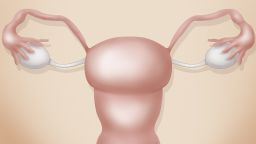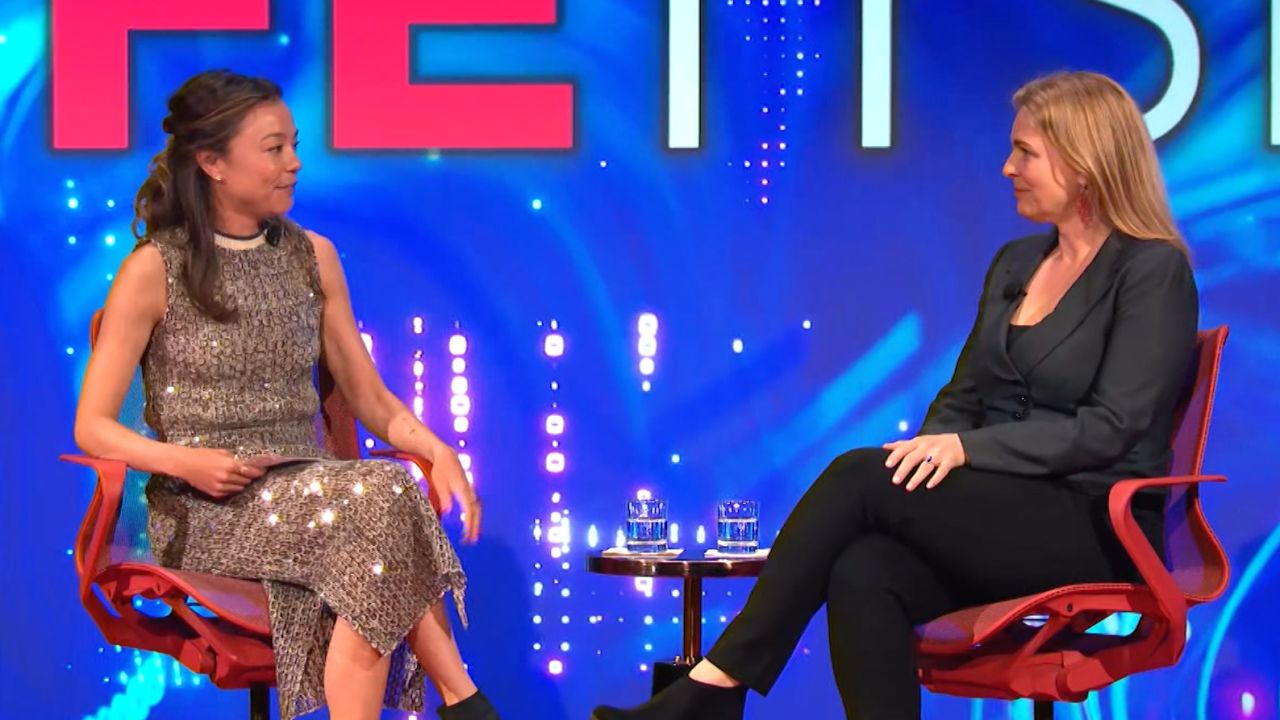One organ in a woman’s body ages more than twice as fast as all other tissues, wreaking havoc with both fertility and long-term health.
“Ovaries are very strange, very odd in terms of the rest of the human body. We can think about them like an accelerated model for human aging,” said Jennifer Garrison, an assistant professor at California’s Buck Institute for Research on Aging, the world’s first biomedical research institution devoted exclusively to the science of aging.
“When a woman is in her late 20s or early 30s, the rest of her tissue is functioning at peak performance, but her ovaries are already showing overt signs of aging,” Garrison told an audience at Life Itself, a health and wellness event presented this year in partnership with CNN.
“Yet most women learn about their ovaries and ovarian function when they go to use them for the first time and find out they’re geriatric,” she added.
The consequences of aged ovaries extend beyond fertility, especially during menopause, the period of time when a person stops having a menstrual cycle.
“When the ovaries stop working due to menopause, they stop making a cocktail of hormones important for general health,” Garrison told CNN. “Even in healthy women, it dramatically increases the risk of stroke, heart disease, cognitive decline, insomnia, osteoporosis, weight gain, arthritis – those are medically established facts.”
There’s more. The age of menopause is also tied to longevity. The average age of natural menopause in the United States is 51, according to the North American Menopause Society.
“Studies show women who have later menopause tend to live longer and have an enhanced ability to repair their DNA,” Garrison said. “But women with natural menopause before the age of 40 are twice as likely to die (early) compared with women going through natural menopause between the ages 50 to 54.”
What if science could learn to slow the rate of aging in ovaries?
“It would be a game changer, right? Women would have parity and options in their reproductive choices and be empowered with control over their lives,” Garrison said. “And at the same time, we could delay the onset of these age-related diseases and hopefully extend life.”
An egg in your grandmother’s womb
Wrap your brain around this: You are a product of an oocyte (an immature egg) that was growing in your grandmother’s womb. Here’s how:
By the time a female fetus reaches 20 weeks gestation, there are between 6 million and 7 million oocytes in those tiny, developing ovaries. You came from one of those – which means that when your grandmother was about five months pregnant, you were a spec of a possibility inside her womb.

“This is why there’s multigenerational impacts for any environmental exposures a woman may have when she’s pregnant. Not only does it affect the woman and fetus, but it then extends across generations,” said reproductive researcher Francesca Duncan, assistant professor of obstetrics and gynecology at Northwestern University’s Feinberg School of Medicine.
By the time your mother was born, however, her infantile ovaries only carried 1 million to 2 million eggs, according to the American College of Obstetricians and Gynecologists. The massive loss of oocytes in utero occurs throughout much of the animal kingdom. Some researchers think it could be a normal step in fetal growth or development.
By the time people hit puberty they only have about 300,000 to 400,000 immature eggs left. “The ovary is probably the only organ who loses its function prior to its first use,” Duncan said.
The decline escalates with age. For 95% of people, only 12% of their eggs will be available at age 30 and only 3% at age 40, according to a January 2010 analysis.
Why does accelerated aging occur?
Why do humans develop senile ovaries by age 30? Science doesn’t know, Garrison said, “and learning about how little we know about why that happens infuriated me actually.”
One reason: A historical lack of funding for reproductive research, she said. Then there’s the fact that research studies generally ignored women: “Females were considered to be confounds (confusion) in the data – their cycles are noisy and mess up the data.”
Today that’s changed. In 2017, the National Institutes of Health issued an amendment to its policies on enrolling women and minorities in clinical trials – the new language mandates study results are reported by sex/gender and race/ethnicity. In 2020, the NIH issued its first research grant on sex and gender, calling it a “milestone achievement.”
While extending fertility will be one outcome of the research in the field, scientists aren’t trying to help people get pregnant naturally in their 50s, 60s and 70s, said Dr. Kara Goldman, an associate professor of obstetrics and gynecology at Northwestern’s Feinberg School of Medicine.
“That would be a completely irresponsible goal and ultimately a shortsighted one. We’re thinking about the bigger picture: The best way to prevent the health impact of menopause is to prolong the ovaries’ natural functioning,” Goldman said.
Basic questions need answers
With the help of investors, Garrison has launched the Global Consortium for Reproductive Longevity and Equality. The center is funding research to accelerate the pace of discovery on the underlying causes of accelerated aging in the ovaries.
Since science knows so little about the female reproductive cycle, research is forced to start with the basics, Garrison said.
“What’s the fundamental cause of this decline in egg quality and quantity with age? We don’t know the answer to that,” she said. “The age of natural menopause is really variable at the individual level, and we don’t know why.”
In fact, science doesn’t even understand why humans go through menopause at all. Only four other mammals – killer whales (orcas), short-finned pilot whales, beluga whales and narwhals – end their menstrual cycles and have a post-reproductive life span.
“Why does a woman’s reproductive span correlate with her overall life span? Even brothers of women who go through menopause later tend to live longer,” Garrison added. “There’s a genetic component there that’s clearly very important, and we don’t understand it at all.”
If basic questions about the ovaries could be answered, “we would have this thing cracked,” Garrison said.
“It’s not a moon shot – a moon shot would be to get rid of menopause altogether,” she said. “But understanding what causes it and figuring out interventions that would extend it a little bit by one year, two years, five years, 10 years – that is very achievable.”
Correction: A previous version of this article misstated the name of the consortium launched by Jennifer Garrison.




